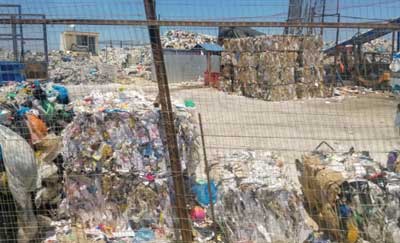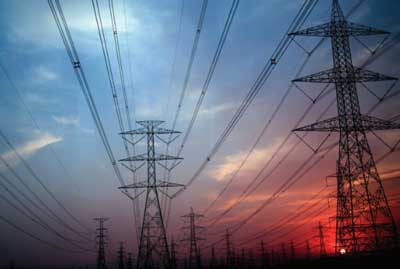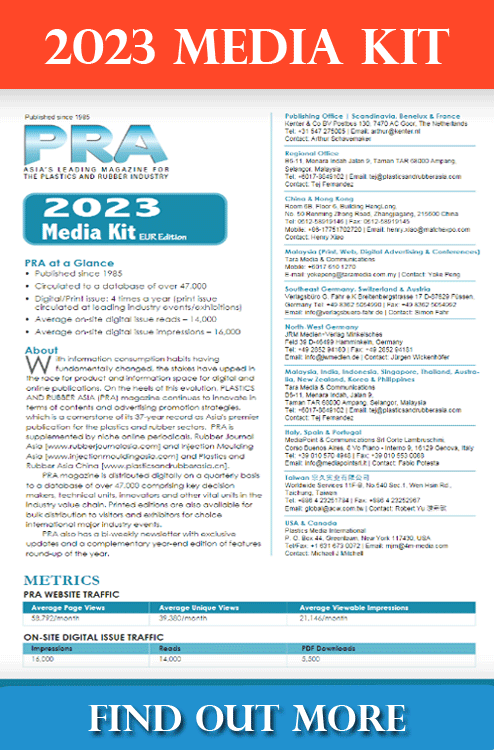Finding a circular way out of the plastic waste mess
Weighing in on solutions to eliminate plastic waste from the environment has come to a head, especially when recycling is not helping, says Angelica Buan in this report.
In search of an all-in solution
Think tanks and experts all over the world agree that the volume of plastic waste continues to rise despite efforts to reduce it. Plastics will continue to overwhelm the environment unless an effective solution is successfully implemented.
Based on the OECD report, Global Plastics Outlook, plastic leakage to the environment is projected to reach 44 million tonnes/year in 2060, with the marine waste potentially more than doubling to 1,014 million tonnes from 353 million tonnes in 2019. The OECD predicts that the amount of plastic waste produced worldwide would nearly triple, with less than a fifth being recycled and half ending up in landfills.
Several actions have been proposed, including the imposition of plastics taxes, the incorporation of recycled plastic content into new plastic products, and the adaptation of Extended Producer Responsibility (EPR) schemes, in which producers and even brand owners are assigned responsibility for the treatment or disposal of post-consumer products; as well as the improvement of waste management infrastructure and the increase of waste collection rates.
The circular economy puts emphasis on recycling. In recent years, advanced recycling technologies that augment mechanical recycling, the de facto recycling method, have emerged, fuelled by policies aimed at increasing recycling rates and PCR content in products. However, the low recycling rates and poor quality of recycled plastics have called into question the viability of recycling.
Consider this: the world has produced approximately 7 billion tonnes of plastic waste, with less than 10% of this being recycled. The remaining million tonnes of plastic waste are discarded into the environment or sent to locations that lack proper recycling facilities and will eventually be burned or disposed of.

In its Global Assessment of Marine Litter and Plastic Pollution report, the United Nations Environment Programme (UNEP)estimated an annual loss in the value of plastic packaging waste during sorting and processing to be between US$80 and US$120 billion.
In the meantime, while incineration and landfilling will continue to account for approximately 20% and 50% of disposing plastic waste, respectively, the OECD report expresses optimism that successful recycling will nearly double to 17% in 2060 from 9% in 2019.
Recycling challenges: infrastructure lacking, high energy costs

Recycling is still seen as a solution to the plastic problem by businesses and consumers. A slew of consumer goods behemoths have publicly committed to using recycled materials in more of their products and packaging.
However, there is a significant investment barrier, particularly for emerging economies that need to build an efficient recycling infrastructure from the ground up.
Consultancy McKinsey had made a bold estimate. It said that building a fully functional waste management system, including roads, landfills, waste-to-energy facilities, trucks, trash points, and recycling, along with a broad profile of supporting infrastructure, could cost between US$560 billion to US$680 billion over ten years. A system of this type would aim to manage approximately 850 million tonnes of waste/year, including, but not limited to, plastic waste.
Meanwhile, rising energy prices pose additional obstacles for the recycling industry. According to Plastics Recyclers Europe, high energy prices could drive recyclers out of business, with energy now accounting for up to 70% of operational costs.
It has been reported that energy prices in Europe have increased by 400%. Plastic recycling facilities operate 24/7, which means that energy utilities are one of the three major cost factors after labour and maintenance.
For plastic recyclers, energy typically accounts for 15-20% of total operating costs. Thus, the energy crisis may jeopardise the European Union's transition to a circular economy. This undermines recent EU policy and global developments that have increased investments into Europe's plastic recycling capacity. It is suggested that the European Commission and EU member states should intervene to keep recycling operations running.
(PRA)
Subscribe to Get the Latest Updates from PRA Please click here
©2022 Plastics and Rubber Asia. All rights reserved.

©2022 Plastics and Rubber Asia. All rights reserved.
Home Terms & Conditions Privacy Policy Webmail Site Map About Us





















